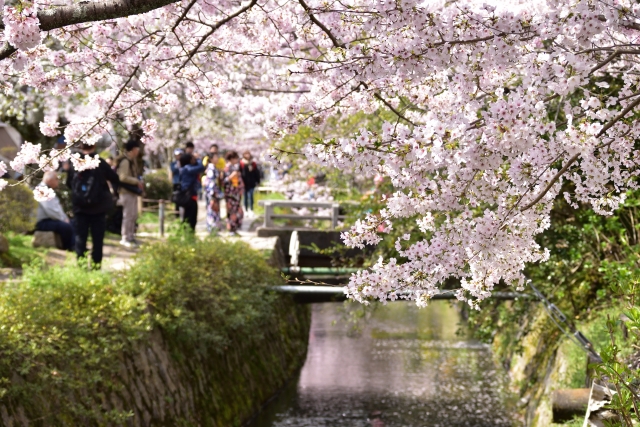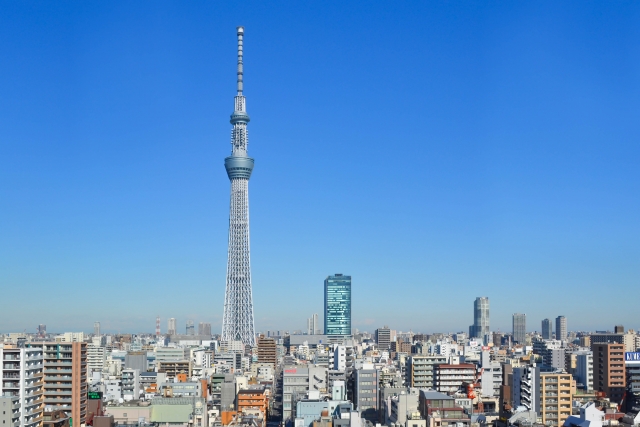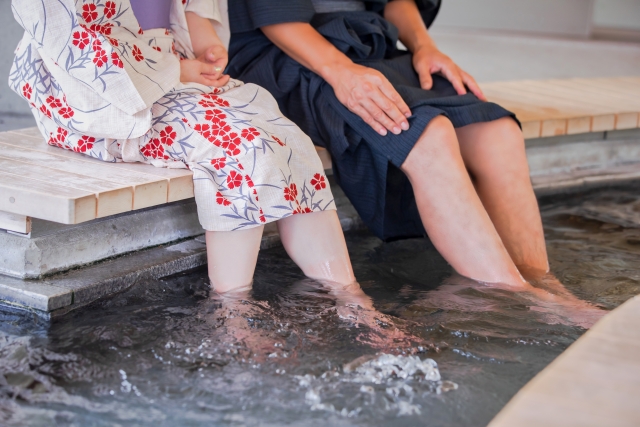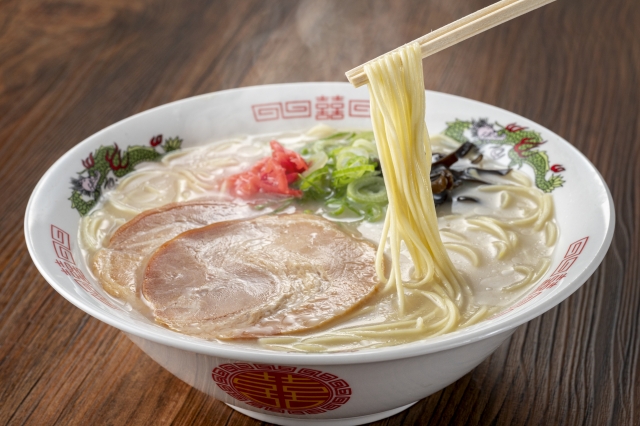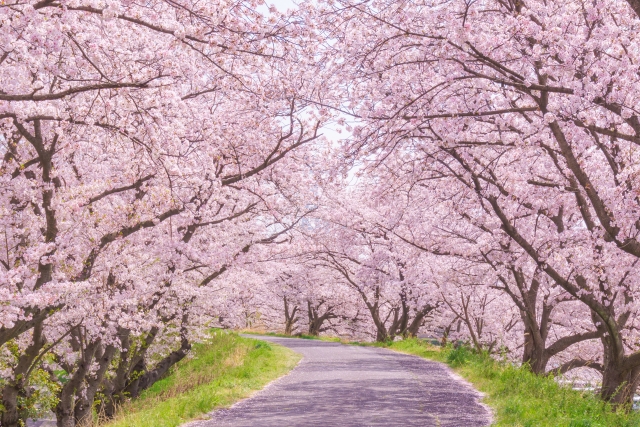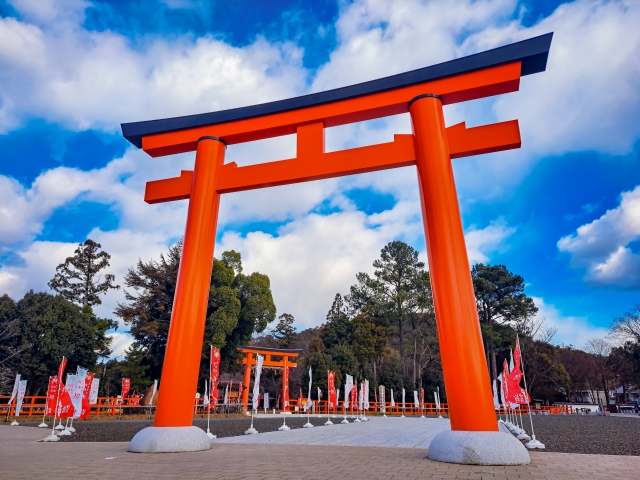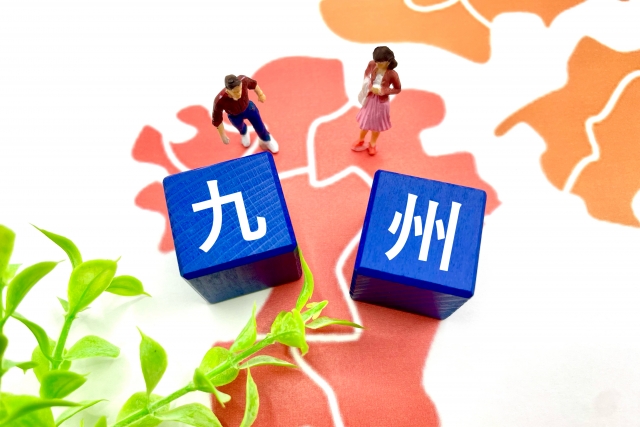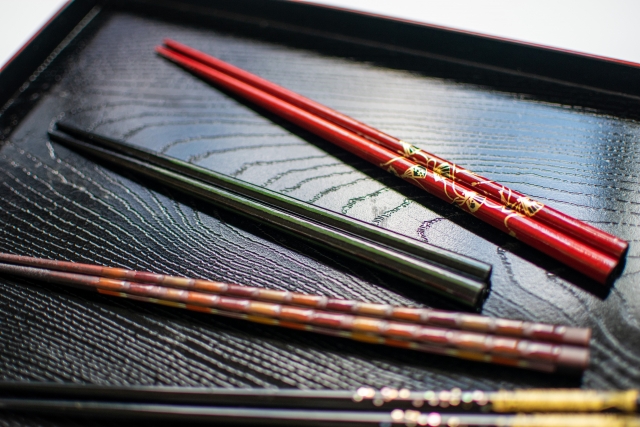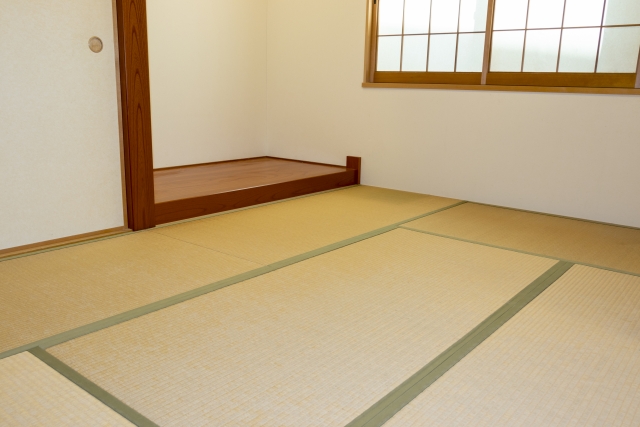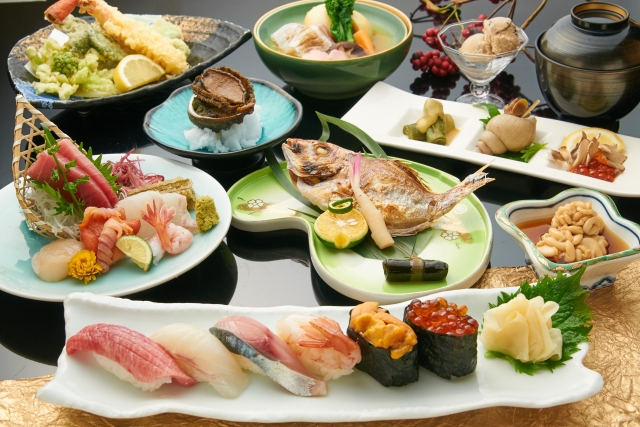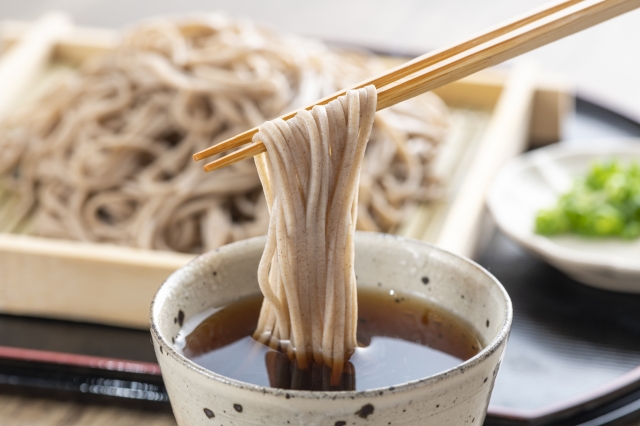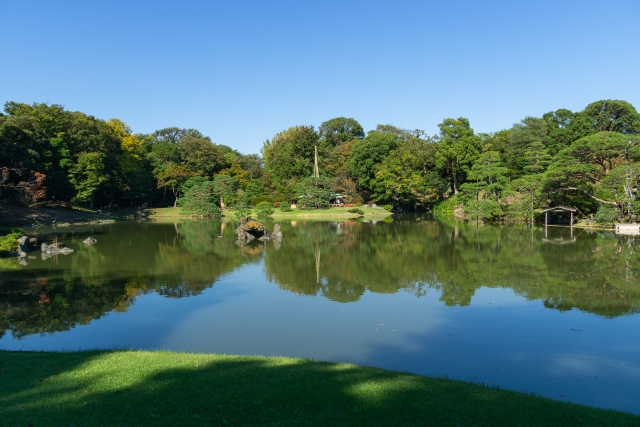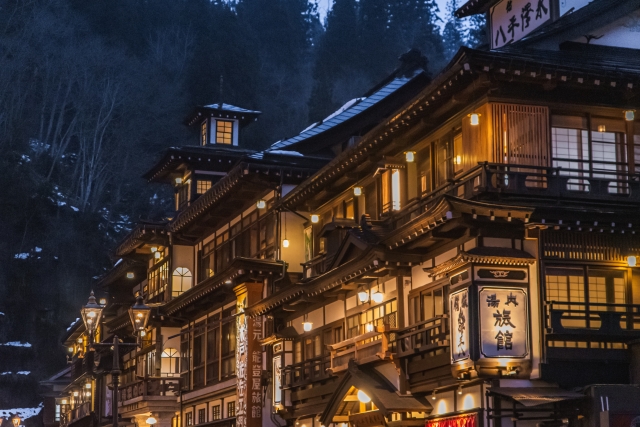In Japan, it is customary for many people to gather at Hanami(cherry blossom viewing) spots in spring to enjoy a lively time with family and friends. this kind of hanami has been practiced for a long time. Here is an introduction to the custom of Hanami, along with how to enjoy it.
 Cherry blossoms have long been the most beloved flower of the Japanese people. Cherry blossoms are the national flower of Japan, and since the Heian period (794-1185), cherry blossoms have been associated with Hanami. But why are cherry blossoms the only flowers that are loved and admired? Some people say that cherry blossoms are well suited to the Japanese temperament because of their gracefulness when they fall after blooming in full bloom. It is true that the shorter the blooming period, the more we look forward to the blooming of the cherry blossoms and the more we regret the falling of the blossoms. But this is not the only reason. In the background of Japanese people’s love for cherry blossoms, there is a history of reading the transition to spring from the blooming of cherry blossoms. In the days when there were no weather forecasts, farmers would prepare their rice fields and plant seeds in the fields according to the blooming of the cherry blossoms. Furthermore, there is a long history of nobles and warriors using cherry blossom viewing as an extension of politics, holding gorgeous cherry blossom viewing parties not only for fun, but also to show off their power and to confirm their domination. In other words, for both the farmers and the nobles and the warriors, cherry blossoms have become a special flower in their long history, and their attachment to cherry blossoms has probably increased.
Cherry blossoms have long been the most beloved flower of the Japanese people. Cherry blossoms are the national flower of Japan, and since the Heian period (794-1185), cherry blossoms have been associated with Hanami. But why are cherry blossoms the only flowers that are loved and admired? Some people say that cherry blossoms are well suited to the Japanese temperament because of their gracefulness when they fall after blooming in full bloom. It is true that the shorter the blooming period, the more we look forward to the blooming of the cherry blossoms and the more we regret the falling of the blossoms. But this is not the only reason. In the background of Japanese people’s love for cherry blossoms, there is a history of reading the transition to spring from the blooming of cherry blossoms. In the days when there were no weather forecasts, farmers would prepare their rice fields and plant seeds in the fields according to the blooming of the cherry blossoms. Furthermore, there is a long history of nobles and warriors using cherry blossom viewing as an extension of politics, holding gorgeous cherry blossom viewing parties not only for fun, but also to show off their power and to confirm their domination. In other words, for both the farmers and the nobles and the warriors, cherry blossoms have become a special flower in their long history, and their attachment to cherry blossoms has probably increased.
 Hanami is said to have been started by the nobles in the Nara period (710-794), and was initially a way to admire the plum blossoms that had been introduced from China. In the Heian period (794-1185), the flowers used for hanami shifted from plum blossoms to cherry blossoms. The origin of hanami is said to be a party called “Kaen no Sechi” held by Emperor Saga. Later, in the Kamakura period (1185-1333), hanami spread to the samurai class. The most famous ones are “Yoshino-no-hanami” and “Daigo-no-hanami” held by Toyotomi Hideyoshi. Yoshino-no-hanami” was a large scale cherry blossom viewing event with as many as 5,000 people, including famous warriors such as Tokugawa Ieyasu, Maeda Toshiie and Date Masamune. In the ” Daigo-no-hanami”, 700 cherry trees were planted in Daigoji Temple for the cherry blossom viewing, and the tea ceremonies and the poetry events were held in a gorgeous setting. Sanshoku dango (three-colored dumplings sweets), which is popular with Hanami, is also said to have been first served at this time. In the Edo period (1603-1868), the breeding of cherry trees began to be actively improved, and the most popular cherry tree species, Someiyoshino, which can be seen all over Japan today, was also developed during this period.
Hanami is said to have been started by the nobles in the Nara period (710-794), and was initially a way to admire the plum blossoms that had been introduced from China. In the Heian period (794-1185), the flowers used for hanami shifted from plum blossoms to cherry blossoms. The origin of hanami is said to be a party called “Kaen no Sechi” held by Emperor Saga. Later, in the Kamakura period (1185-1333), hanami spread to the samurai class. The most famous ones are “Yoshino-no-hanami” and “Daigo-no-hanami” held by Toyotomi Hideyoshi. Yoshino-no-hanami” was a large scale cherry blossom viewing event with as many as 5,000 people, including famous warriors such as Tokugawa Ieyasu, Maeda Toshiie and Date Masamune. In the ” Daigo-no-hanami”, 700 cherry trees were planted in Daigoji Temple for the cherry blossom viewing, and the tea ceremonies and the poetry events were held in a gorgeous setting. Sanshoku dango (three-colored dumplings sweets), which is popular with Hanami, is also said to have been first served at this time. In the Edo period (1603-1868), the breeding of cherry trees began to be actively improved, and the most popular cherry tree species, Someiyoshino, which can be seen all over Japan today, was also developed during this period.
 Everyone wants to get a good spot, but it is impolite to take up more space than necessary.
Everyone wants to get a good spot, but it is impolite to take up more space than necessary.
 If you place picnic sheets at the base of the cherry trees, the roots of the trees will be weakened. If you use a breathable rug such as a goza, it will be friendly to the cherry blossoms and add to the atmosphere.
If you place picnic sheets at the base of the cherry trees, the roots of the trees will be weakened. If you use a breathable rug such as a goza, it will be friendly to the cherry blossoms and add to the atmosphere.
 If you wrap your bento in a furoshiki (wrapping cloth) and spread the food out on it, the taste will be doubled. You can also repackage purchased bentos in a lacquered box for a more tasteful look. Also, sakuramochi(rice cakes) and other cherry blossom foods are recommended.
If you wrap your bento in a furoshiki (wrapping cloth) and spread the food out on it, the taste will be doubled. You can also repackage purchased bentos in a lacquered box for a more tasteful look. Also, sakuramochi(rice cakes) and other cherry blossom foods are recommended.
 The key to cherry blossom viewing is not to drink too much and enjoy the cherry blossoms. Try not to get too carried away from drinks.
The key to cherry blossom viewing is not to drink too much and enjoy the cherry blossoms. Try not to get too carried away from drinks.
 Making matcha (powdered green tea) outdoors is called “nodate,” but you can also bring your favorite tea leaves and hot water, such as green tea or black tea, and enjoy it under the cherry blossoms. You will have an elegant time.
Making matcha (powdered green tea) outdoors is called “nodate,” but you can also bring your favorite tea leaves and hot water, such as green tea or black tea, and enjoy it under the cherry blossoms. You will have an elegant time.
 Some people may want to spend their time quietly, so please be considerate of your neighbors.
Some people may want to spend their time quietly, so please be considerate of your neighbors.
 Try not to use disposable items as much as possible, use plastic plates and towels to reduce trash, and take what you throw home with you.
Try not to use disposable items as much as possible, use plastic plates and towels to reduce trash, and take what you throw home with you.
 Miharu-Taki-zakura, located in Miharu Town, Tamura-gun, Fukushima Prefecture, is a vivid beni-shidare cherry blossoms with large branches hanging down like a waterfall. It has been selected as a national natural treasure and one of the 100 most beautiful cherry blossom viewing spots in Japan.
They are giant trees over 1,000 years old, and every spring they bloom with gorgeous flowers on each of their widely spread branches. The branches are as wide as 25 meters from east to west and 20 meters from north to south. Many people are fascinated by its powerful and vital appearance. At night, the cherry blossoms are lit up, creating a fantastic sight that is different from the daytime view. Near the Mihara-Taki-zakura, there is the Sakura Park, where you can enjoy 3,200 cherry trees. There is a path around the park, so you can take a walk and enjoy the cherry blossoms from various angles.
Miharu-Taki-zakura, located in Miharu Town, Tamura-gun, Fukushima Prefecture, is a vivid beni-shidare cherry blossoms with large branches hanging down like a waterfall. It has been selected as a national natural treasure and one of the 100 most beautiful cherry blossom viewing spots in Japan.
They are giant trees over 1,000 years old, and every spring they bloom with gorgeous flowers on each of their widely spread branches. The branches are as wide as 25 meters from east to west and 20 meters from north to south. Many people are fascinated by its powerful and vital appearance. At night, the cherry blossoms are lit up, creating a fantastic sight that is different from the daytime view. Near the Mihara-Taki-zakura, there is the Sakura Park, where you can enjoy 3,200 cherry trees. There is a path around the park, so you can take a walk and enjoy the cherry blossoms from various angles.
 The second is the Yamataka-Jindai-zakura in Hokuto City, Yamanashi Prefecture. It is a huge Edohigan cherry tree, 10.3 meters tall and 11.8 meters around the base and trunk, and it is 2,000 years old. It is said to be one of the oldest and largest cherry trees in Japan. The sacred legend behind the cherry tree gives it an atmosphere of divinity. Many people from all over Japan come to see the cherry blossoms in full bloom in April. Around the same time as the cherry blossoms, about 80,000 daffodils also bloom very beautifully. The vivid contrast of yellow and light red colors creates a very beautiful sight. Combined with the towering Southern Alps mountain range in the background, it makes it look like postcard that it is a spectacular view.
The second is the Yamataka-Jindai-zakura in Hokuto City, Yamanashi Prefecture. It is a huge Edohigan cherry tree, 10.3 meters tall and 11.8 meters around the base and trunk, and it is 2,000 years old. It is said to be one of the oldest and largest cherry trees in Japan. The sacred legend behind the cherry tree gives it an atmosphere of divinity. Many people from all over Japan come to see the cherry blossoms in full bloom in April. Around the same time as the cherry blossoms, about 80,000 daffodils also bloom very beautifully. The vivid contrast of yellow and light red colors creates a very beautiful sight. Combined with the towering Southern Alps mountain range in the background, it makes it look like postcard that it is a spectacular view.
 Lastly, Neodani Usuzumi-zakura is located in Motosu City, Gifu Prefecture, which are cherry trees, which is over 1,500 years old, stands about 16 meters tall and has a trunk circumference of about 10 meters, and is designated as a national natural treasure. With branches stretching more than 25 meters in all directions, it is a huge tree with a powerful beauty. Usuzumi-zakura” is named after the cherry blossoms that bloom from buds until they eventually fall, changing from pale pink to white and then to a color like light sumi ink when they are about to fall. It is said that it is very rare to be able to view the various colors of petals in one season. The illuminated cherry blossoms at night are also recommended for their fantastic beauty.
Lastly, Neodani Usuzumi-zakura is located in Motosu City, Gifu Prefecture, which are cherry trees, which is over 1,500 years old, stands about 16 meters tall and has a trunk circumference of about 10 meters, and is designated as a national natural treasure. With branches stretching more than 25 meters in all directions, it is a huge tree with a powerful beauty. Usuzumi-zakura” is named after the cherry blossoms that bloom from buds until they eventually fall, changing from pale pink to white and then to a color like light sumi ink when they are about to fall. It is said that it is very rare to be able to view the various colors of petals in one season. The illuminated cherry blossoms at night are also recommended for their fantastic beauty.
 Recently, the style of Hanami has been diversifying with in the Corona virus pandemic. For example, although it already ended in fiscal year 2021, Rihga Royal Hotel has offered an indoor hanami plan only for this time of year, where you can enjoy indoor hanami with delicious drinks in a private space with your family and friends while admiring cherry blossom art flowers reaching to the ceiling. In addition, the Yokohama Bay Sheraton Hotel & Towers has also launched an accommodation plan that includes a “cherry blossom cruise” to enjoy the coming of spring along with the cherry blossoms. This plan allows you to enjoy a relaxing view of many beautiful cherry trees from the water at daytime and enjoy a special menu of seafood at the hotel for dinner. In this way, the COVID-19 has created new ways to enjoy the cherry blossoms in different places.
Recently, the style of Hanami has been diversifying with in the Corona virus pandemic. For example, although it already ended in fiscal year 2021, Rihga Royal Hotel has offered an indoor hanami plan only for this time of year, where you can enjoy indoor hanami with delicious drinks in a private space with your family and friends while admiring cherry blossom art flowers reaching to the ceiling. In addition, the Yokohama Bay Sheraton Hotel & Towers has also launched an accommodation plan that includes a “cherry blossom cruise” to enjoy the coming of spring along with the cherry blossoms. This plan allows you to enjoy a relaxing view of many beautiful cherry trees from the water at daytime and enjoy a special menu of seafood at the hotel for dinner. In this way, the COVID-19 has created new ways to enjoy the cherry blossoms in different places.
 Hanami is still enjoyed by many people today. Hanami is a combination of the noble culture of Hanami and the farmer culture of Hanami, and became widely established as a pastime for the common people during the Edo period, which has led to Hanami up to the present. The style of hanami has changed over the years, and new ways of enjoying hanami, such as indoor hanami, are now being developed. Please come and enjoy the culture of hanami that the Japanese people have passed down for over a thousand years.
Hanami is still enjoyed by many people today. Hanami is a combination of the noble culture of Hanami and the farmer culture of Hanami, and became widely established as a pastime for the common people during the Edo period, which has led to Hanami up to the present. The style of hanami has changed over the years, and new ways of enjoying hanami, such as indoor hanami, are now being developed. Please come and enjoy the culture of hanami that the Japanese people have passed down for over a thousand years.
Contents
Why do Japanese people like cherry blossoms?
Introducing cherry blossoms, a spring tradition
Origin of cherry blossom viewing
Surprise yourself with the charm of dango(dumplings), a heart-warming Japanese sweet.


